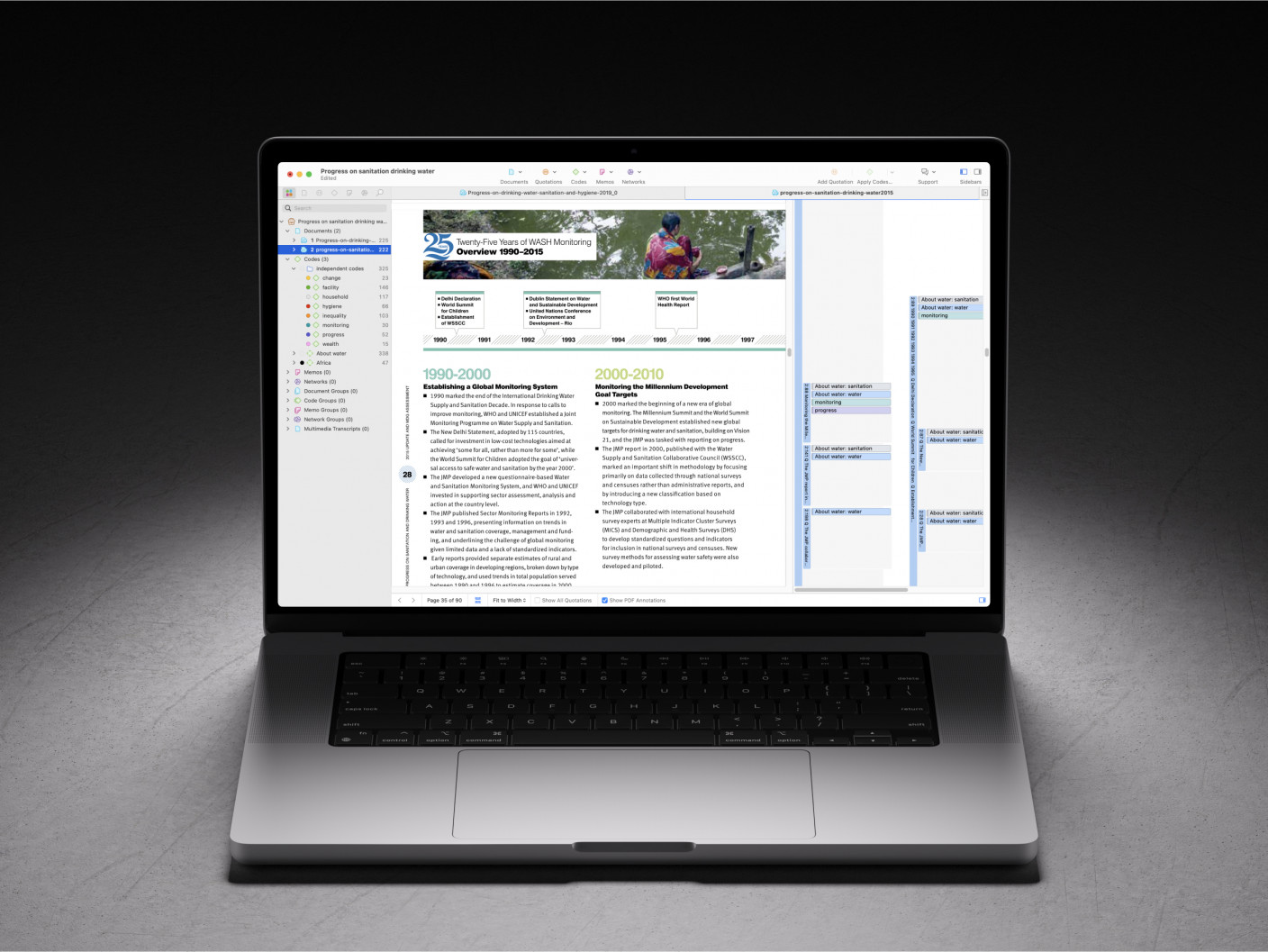- What is Mixed Methods Research?
- Advantages of Mixed Methods Research
- Challenges in Mixed Methods Research
- Common Mistakes in Mixed Methods Research
- Mixed Methods Research Paradigms
- Validity & Reliability in Mixed Methods Research
- Ethical Considerations in Mixed Methods Research
- Mixed Methods vs. Multiple Methods Research
- Mixed Methods Research Designs
- How to Choose the Right Mixed Methods Design
- Convergent Parallel Design
- Explanatory Sequential Design
- Exploratory Sequential Design
- Embedded Mixed Methods Research Design
- Transformative Mixed Methods Design
- Multiphase Mixed Methods Research Design
- How to Conduct Mixed Methods Research
- Sampling Strategies in Mixed Methods Research
- Data Collection in Mixed Methods Research
- Triangulation in Mixed Methods Research
- Data Analysis in Mixed Methods Research
- How to Integrate Quantitative & Qualitative Data?
- How to Interpret Mixed Methods Research Findings?
- Software Tools for Mixed Methods Data Analysis
- How to Write a Mixed Methods Research Proposal
- How to Write a Mixed Methods Research Paper?
- Reporting Results in Mixed Methods Research
- Mixed Methods Research Examples
- How to cite "The Guide to Mixed Methods Research"
Triangulation in Mixed Methods
Triangulation is the use of multiple methods, data sources, theories, or investigators to study a single phenomenon. The goal is to enhance confidence in the findings by corroborating results from different approaches.

Introduction
The concept of triangulation is originally borrowed from navigation, where two known points help determine an unknown location. The term has evolved to refer to the use of multiple data sources, theoretical frameworks, methodologies, or researchers to confirm findings and answer research questions (Mertens, 2011). Over time, triangulation has become increasingly associated with mixed methods research, where qualitative and quantitative data are combined to provide a more comprehensive understanding of complex social phenomena. By combining data sources, mixed methods researchers can gain a more nuanced understanding of the subject. More broadly, the primary purpose of triangulation is to enhance the trustworthiness of research by increasing the depth and breadth of data interpretation, making it relevant to research processes within mixed methods approaches and beyond.
Differences between triangulation and mixed methods research
Triangulation and mixed methods research serve different purposes and follow distinct approaches in quantitative and qualitative studies. Triangulation in research methodologies more broadly strengthens the validity of findings by using multiple perspectives, such as different data sources, research methods, or theoretical lenses. It helps confirm patterns, reduce the risk of errors, and improve the consistency of results. Researchers often use triangulation to cross-check findings and ensure a more balanced interpretation.
Mixed methods research, on the other hand, integrates quantitative and qualitative approaches to provide a richer understanding of a research problem. Instead of simply verifying data, it combines different types of evidence to explore complex questions from multiple angles. Mixed methods research often follows a structured design, where researchers collect data sequentially or simultaneously, using qualitative findings to explain numerical data or statistical patterns to support qualitative themes. While triangulation enhances the credibility of research by validating results, mixed methods research expands the depth of analysis by weaving together different data sets into a cohesive study.
Types of triangulation
There are four types of triangulation:
- Methodological triangulation – Using different data collection methods (e.g., qualitative data and quantitative data) to study the same phenomenon.
- Data triangulation – Using different data sources (e.g., different groups, settings, or time periods) to validate findings.
- Investigator triangulation – Involving multiple researchers to reduce undue individual influence in data collection and analysis.
- Theoretical triangulation – Applying multiple theoretical perspectives to interpret data.
Methodological triangulation
Methodological triangulation involves using multiple methods to collect data to study the same phenomenon. Researchers may apply within-method triangulation, which uses different techniques within the same research approach, such as combining in-depth interviews with focus groups in a qualitative study. Alternatively, they may use between-method triangulation, where qualitative and quantitative research methods are integrated, such as combining survey data with narrative data. This type of triangulation is widely used to cross-validate results and ensure that findings are not dependent on a single method.
The primary purpose of methodological triangulation is to enhance the reliability and validity of research findings by reducing the limitations associated with any single method. By incorporating multiple approaches, researchers can uncover deeper insights, address research questions more comprehensively, and increase confidence in their results. For example, in a customer satisfaction study, a researcher may conduct quantitative surveys to obtain measurable ratings of customer experiences and follow up with qualitative methods, such as interviews, to explore customer perceptions in greater depth. If both methods produce similar findings, the credibility of the research is strengthened.
One of the biggest benefits of methodological triangulation is that it reduces method bias, making research conclusions more robust. Additionally, using multiple methods provides a more nuanced understanding of the research problem, as qualitative and quantitative data analysis may reveal unique aspects of the phenomenon under study. However, this type of triangulation can be time-consuming and resource-intensive, requiring careful planning to ensure consistency in data collection and interpretation.
Data triangulation
Data triangulation refers to the use of multiple sources of data to confirm research findings. This can involve collecting data from different groups of participants, multiple settings, or various time periods. Researchers employ this approach to examine the consistency of findings across different conditions, which strengthens the credibility of their research. There are three primary types of data triangulation: time triangulation, which collects data at different points in time; space triangulation, which gathers data from multiple locations; and person triangulation, which involves different groups, such as stakeholders, employees, and customers.
The purpose of data triangulation is to verify research findings by comparing data from different perspectives. For instance, in a mental health study, researchers might collect information from patients, caregivers, and therapists to ensure that the findings are not biased by a single viewpoint. Similarly, in an educational research study, data could be gathered from students, teachers, and parents to obtain a more comprehensive understanding of learning outcomes. If the findings are consistent across sources, it strengthens the study's credibility.
One of the major benefits of data triangulation is that it minimizes errors that may arise from relying on a single data source. By incorporating multiple perspectives, researchers can develop a broader and more holistic view of the phenomenon under investigation. Additionally, this approach enhances the external validity of research, increasing the likelihood that findings can be generalized to different contexts. However, a key challenge is ensuring that data from different sources remain comparable and do not introduce confounding variables that could skew the results.
Investigator triangulation
Investigator triangulation involves multiple researchers in the data collection, analysis, and interpretation process to minimize bias and ensure more balanced findings. This approach is particularly valuable in qualitative research, where subjective interpretation plays a major role. By involving different researchers with varying backgrounds and perspectives, investigator triangulation can integrate qualitative insights from diverse perspectives, adding nuance to the qualitative analysis and constructing an answer to the research question that is more likely to resonate with different audience members.
The main purpose of investigator triangulation is to increase the trustworthiness of the study findings by ensuring that multiple experts assess the data independently. For example, in a study on social anxiety, a research team consisting of a psychologist, a sociologist, and a communication expert might analyze the same interview data separately. If all three researchers identify similar themes and patterns in the data, it confirms that the findings are not influenced by individual bias. If discrepancies arise, the team can engage in discussions to refine interpretations and arrive at a more balanced conclusion.
The key advantage of investigator triangulation is that it strengthens the credibility and dependability of research by incorporating diverse viewpoints, which is valuable in both qualitative and quantitative methods. It also enhances inter-rater reliability, ensuring that different researchers can arrive at similar conclusions when analyzing the same dataset. Additionally, this approach fosters collaborative research, where experts from different fields contribute to a more comprehensive analysis. However, a major challenge of investigator triangulation is the potential for disagreements among researchers, which can lead to extended discussions and delays in finalizing results. Managing these differences requires effective communication and well-defined protocols for resolving discrepancies.
Theory triangulation
Theory triangulation involves applying multiple theoretical frameworks to interpret research findings, providing a richer and more multidimensional understanding of a phenomenon. Researchers use this approach to avoid relying on a single theoretical perspective, which may limit their interpretation of data. By integrating different theories, they can explore how various conceptual models explain the same set of findings, leading to more robust conclusions.
The primary purpose of theory triangulation is to broaden the analytical lens and test the applicability of different theoretical perspectives. For instance, in a study on employee motivation, researchers may apply both Maslow’s Hierarchy of Needs (which emphasizes intrinsic human needs) and Self-Determination Theory (which focuses on autonomy, competence, and relatedness) to understand what drives employee engagement. If both theories lead to similar interpretations of the data, it reinforces understanding of the research problem. If discrepancies arise, researchers can investigate how different factors influence the findings.
One of the biggest advantages of theory triangulation is that it reduces theoretical bias and ensures a more comprehensive interpretation of results. It allows researchers to compare different frameworks, identify gaps in existing theories, and develop new insights that might not emerge from a single theoretical perspective. However, a challenge of theory triangulation is that different theories may offer conflicting explanations, making it difficult to synthesize findings. Researchers must carefully analyze and justify how each theoretical framework contributes to data interpretation.
Conclusion
Triangulation is a powerful strategy in research that enhances the credibility and depth of findings by incorporating multiple perspectives, methods, or data sources. Methodological triangulation ensures validity by combining different data collection techniques, while data triangulation strengthens reliability by using multiple sources. Investigator triangulation reduces individual bias by involving multiple researchers, and theory triangulation broadens interpretations by integrating various theoretical perspectives.
By using these triangulation methods, researchers can increase the robustness of their studies, provide stronger evidence for their conclusions, and develop more nuanced insights into complex phenomena and research questions. However, the successful implementation of triangulation requires careful planning, clear justification, and an awareness of potential challenges, such as managing conflicting interpretations, resource constraints, and data integration issues. Despite these challenges, triangulation remains one of the most effective ways to ensure high-quality and trustworthy research across disciplines.
References
- Mertens, D. M., & Hesse-Biber, S. (2012). Triangulation and mixed methods research: Provocative positions. Journal of Mixed Methods Research, 6(2), 75–79


